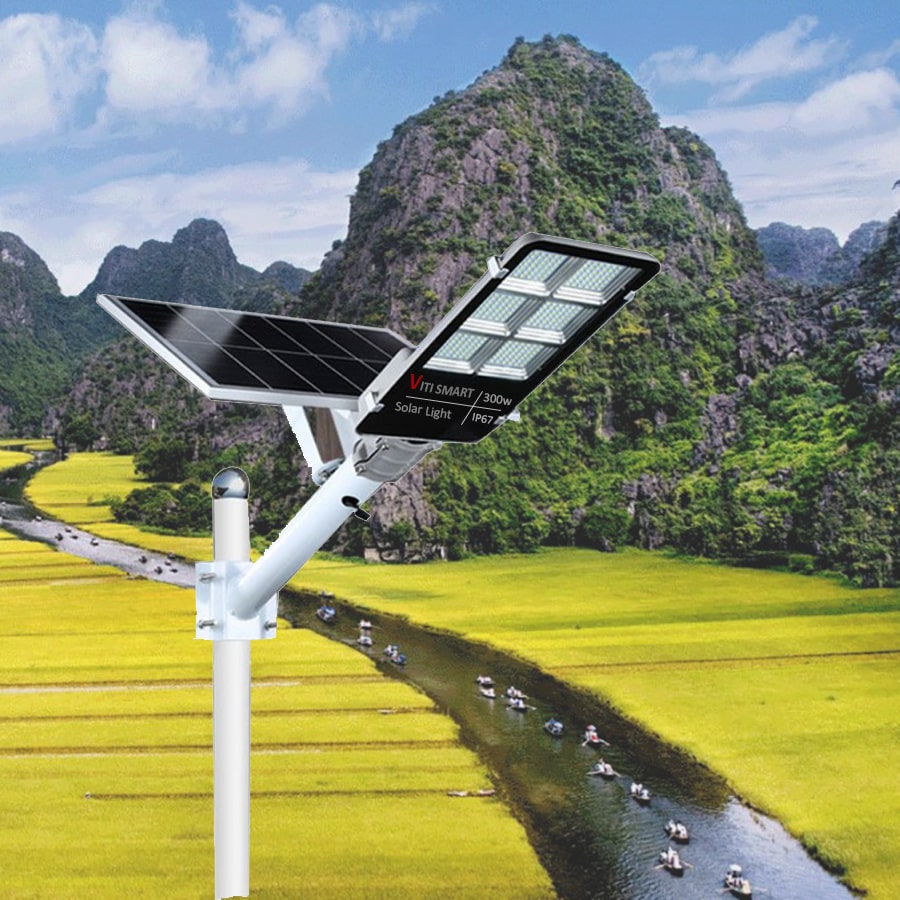If you're in search of reliable, high-performing solar-powered lights, you know it's no easy task. Especially if you live in an area with limited sunshine throughout the year, finding a solar-powered light that meets your expectations can be a challenge. However, stepping towards solar energy is not just about saving the planet, but it can also help you cut down on your electric bills.
If you want to brighten the area around your home, a solar-powered floodlight is a great option. It provides excellent illumination while being easy to install compared to multiple pathway lights or hanging Christmas lights. Don't worry about breaking the bank either, as there are plenty of affordable options available on the market, priced under $100. However, it's important to note that not all solar-powered floodlights are the same. There are various specifications and features to consider before making a purchase. Read on for our top recommendations and everything you need to know before buying.
Read more: How to get soft light in photography and film?

The Best Solar-Powered Flood Lights
Before diving into the details, let's explore the essential factors to consider when choosing a solar-powered floodlight for your home and outdoor space.
Brightness
Brightness is measured in lumens. Floodlights with approximately 1,000 lumens offer a step up in brightness compared to average spotlights. Floodlights ranging from 1,000 to 1,500 lumens are suitable for covering driveways and patios, while 1,500 to 2,000 lumens work well for mid-size backyards and longer driveways. If you have a large outdoor space, consider floodlights ranging from 2,000 to 3,000 lumens. Anything above 3,000 lumens generally provides sufficient illumination for extra-large areas. Keep in mind your neighbors' tolerance to brightness and check if the light meets your town's requirements to avoid any permit-related issues.
Read more: Beginner’s Guide to Permanent Holiday LEDs
Coverage
To determine coverage, look at the angle and range of light. Most floodlights cover up to 180 degrees at a distance of 25 to 40 feet. Many floodlights offer multiple light modes, allowing you to adjust the intensity and duration of the light. Some models are dimmable and offer color temperature options, ranging from bright to warm. Consider whether you want adjustable light and solar panels for your specific needs. If you're looking to cover larger areas or create a well-lit seating area for nighttime activities, "street style" floodlights angled downward are a suitable choice.
Dusk-to-Dawn vs. Motion Sensor
Dusk-to-dawn floodlights are the simplest models available. They charge during the day and automatically turn on at night, with the duration depending on the amount of light captured by the solar panel to power the battery. Motion-sensor floodlights, on the other hand, only activate when motion is detected, thereby conserving battery power. Many floodlights offer both functionality options, with different lighting modes as mentioned earlier.
IP Rating
Ensure that your floodlight is protected against water and small particles like dust. The ingress protection (IP) rating consists of two numbers: the first represents resistance to solids (ranging from 1 to 6), and the second represents resistance to water (ranging from 1 to 8). Most floodlights on the market range from IP65 to IP67.
Read more: 3m Single Colour LED Strip Light Kit (60×3528, 4.8W, 400LM)
Extra Features
Besides lighting modes, dimming, and color temperature options, some solar-powered floodlights come with additional features like timers, memory functions, remote controls, and even smart-enabled options. Evaluate the available features based on your preferences and needs.
How We Selected
Our selection of solar-powered floodlights is based on average customer ratings of four out of five stars or higher. We included a range of styles and options across various price points. During the selection process, we focused on functionality, features, aesthetics, and ease of installation to bring you our top recommendations.
If you're interested in exploring more home lighting options, be sure to check out our articles on the best wireless charging lamps, the best floor lamps, and the best desk lamps.
Read more: From Lamps To Lasers: The Evolution Of Headlights
Frequently Asked Questions
Q: Are solar-powered floodlights reliable in areas with limited sunshine?
A: While solar-powered floodlights may not perform as well in areas with limited sunshine, there are models available that can still provide reliable illumination. Look for floodlights with higher lumens and efficient solar panels to ensure better performance.
Q: How long do solar-powered floodlights last?
A: The lifespan of solar-powered floodlights varies depending on factors such as battery capacity, the quality of materials used, and overall usage. On average, they can last anywhere from 2 to 5 years before requiring a battery replacement.
Q: Can I install solar-powered floodlights myself?
A: Yes, most solar-powered floodlights are designed for easy installation. They typically come with mounting hardware and detailed instructions. However, if you are unsure or not comfortable with electrical installations, it's always best to consult a professional electrician.
Q: Can solar-powered floodlights work during cloudy days?
A: Solar-powered floodlights can still work to some extent during cloudy days, although their performance may be reduced. It's important to choose floodlights with efficient solar panels and adequate battery capacity to compensate for reduced sunlight.
Q: How do I maintain solar-powered floodlights?
A: To maintain optimal performance, regularly clean the solar panel and ensure it is free from dirt and debris. Additionally, check the battery and connections periodically, and replace batteries as needed. Follow the manufacturer's instructions for specific maintenance guidelines.
Q: Can I use solar-powered floodlights for indoor lighting?
A: Solar-powered floodlights are primarily designed for outdoor use. However, some models may be suitable for indoor use depending on the brightness and coverage requirements of the specific area. Always check the manufacturer's recommendations and safety guidelines before using them indoors.
Follow for more: Edgar M Downs


